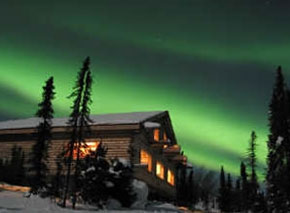History Of The Northern Lights
Trying to pinpoint the history of the northern lights is just as difficult as stating the first day the earth was created. The northern lights have been here since the dawn of the time depicted via cave drawings, writings, legends, myths, and scientific documents.
First recordings of the northern lights
The earliest recordings of the history of the northern lights is more than likely cave drawings found in the south of France dating by 30,000 years. In the history of China, there are several different references to heavenly lights often described as fire, animals, and dragons. The oldest written documentation in China dates back to 2,600 BC. The unusual lights were listed about once in each forty years with the first one in 687 BC. There are various locations throughout the world with drawings and writings from ancient times concerning the northern lights.
Mentioning of the northern lights can be found in:
- The old testament of the Holy Bible with the most prominent in the first chapter of Ezekiel
- The Greek philosopher, Anaximenes, stated in his book the lights were seen in the 4th month on the 5th day in 593 BC
- Hippocrates described the northern lights as reflections of the sun
- Aeschylus also described the northern lights in the same manner
- Aristotle explained the unusual lights as heat from the sun that raised steam up from the ground.
History during ancient battles
Byzantium was saved by the northern lights in 360 BC when King Philip of Macedonia planned to attack via tunnels filled with soldiers. The night was not dark as anticipated which did not allow the soldiers to attack as planned which saved the city of Byzantium.
Around 460 BC in ancient Rome, the northern lights illuminated the sky, which allowed cavalry and infantry soldiers to be seen just prior to the death of Julius Caesar.
At the time when Titus destroyed the city of Jerusalem, the Palestine sky was lit with the flames of the northern lights.
Scientific history of the northern lights
In 555, there is written proof that the northern lights appeared in the sky of Great Britain. Other recordings can be found from 500 to 1100 in the tales of Vikings and in the Chronicle of Scotland.
Printing was invented in the late 1400’s at which time you can find printed documents of the northern lights in 1490.
During the 17th century, the lights were finally given their scientific name, which is Aurora Borealis. Gassendi, French mathematician began using the name to identify the beautiful and unusual lights in 1649. However, Galileo Galilei along with a student, Guiducci began using the scientific name in 1616 with descriptions also found in 1622 using the same name as identification purposes.
Other scientific writings documenting the northern lights from this time forward were more in the way of trying to explain the phenomena. The latest research by Norwegian professors Carl Stormer and Kristian Birkeland explain the lights were a part of a large system of electric currents.

